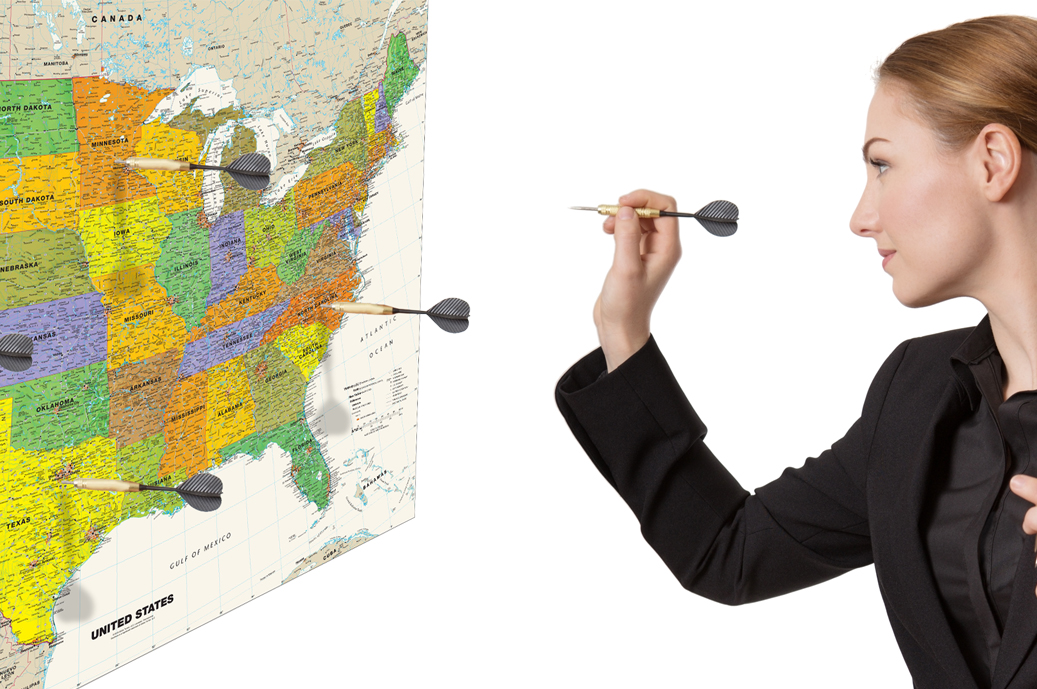Inbound moves from one US state to another often reflect broad social and economic trends. Mark J. Perry recently published an article through the American Enterprise Institute on this topic. A review of the data and specific points helps tell the story behind the numbers. The state of Arizona is ranked as the #1 state for inbound moves.
This ranking is highly touted by the state as proof of its successful approach to balanced economic growth. Arizona Governor Doug Ducey cites the state’s growing economy, daily influx of hundreds of new residents, and a fiscally conservative state budget. Notably, the state’s budget has risen from a $1 billion deficit in 2015 to a $1 billion surplus in 2019, with a record-high balance in the state’s “Rainy Day Fund” of over $1.014 billion.
Top 10 States for Inbound Moves
The top 10 states for inbound moves, in order, are:
- Arizona
- Idaho
- Nevada
- Maine
- North Carolina
- South Carolina
- Vermont
- Florida
- Montana
- Texas
The top 10 states for outbound moves—meaning more residents chose to leave these states, in order, are:
- New York
- Illinois
- New Jersey
- California
- Connecticut
- Hawaii
- Massachusetts
- New Mexico
- Alaska
- Louisiana
Factors Driving Inbound Moves
Of the states experiencing the highest amount of inbound moves, significant factors drive these moves. These factors include local costs, taxes, economic growth, and employment measures.
Local Costs
Home prices for the top 10 states that experience the highest number of inbound moves are significantly lower than home prices of the top 10 outbound states. For the top 10 inbound group, average home prices are $231,250. This amount is $99,900 lower than the average for the top 10 outbound group of $331,150.
Average electricity costs are also significantly lower in the top 10 states for inbound moves. These states have an average electricity cost of 10.71 cents per kilowatt hour. By comparison, the average cost for electricity of the top 10 outbound states is 15.99 cents per kilowatt hour. This represents a premium of over 49% higher than the costs for the top 10 inbound moves states.
Taxes
The average top state corporate tax rate for the top 10 states for inbound moves is 5%. This compares to the rate of 8% for the top 10 states for outbound moves. Corporate taxes are often cited as significantly hampering business and economic growth. Many companies have made announcements about relocating from one state with comparatively high taxes to another state with comparatively low taxes.
Employment
Growth in jobs and employment is a key indicator of a state’s economic health. The United States Department of Labor’s Bureau of Labor Statistics considers job growth of 100,000 or more to have a very positive and long-lasting impact on economic growth. The Bureau’s Current Labor Statistics Highlights show that nonfarm payroll employment increased by 128,000 in October 2019. The Bureau also revised the August and September figures significantly upward, again reflecting more favorable economic performance and health. For October 2019, the state of Arizona gained 31,600 nonfarm jobs.
What Should Employers do About Inbound Moves?
Employers in the top 10 states for inbound moves should expect a rise in demand for workers as more residents move into their state. Inbound moves generate a significant economic impact on a location. As a result of inbound moves, new businesses and residents require products and services sourced from the local area, such as:
- New home construction
- Insurance policies
- Educational institutions
- Retail sales
- Mortgage services
- Infrastructure
- Entertainment establishments
- Cultural institutions
Companies should review their hiring needs, corporate objectives, and relocation programs. Employers may need to consider offering relocation benefits to attract top talent with specific skills and training. They should also look into pre-hire assessment tools to identify the most qualified candidates for their job openings.
Conclusion
GMS’ team of corporate relocation experts has helped thousands of our clients understand how to respond to labor and economic market forces such as inbound moves to growing states. Our team can help your company by using industry best practices to design your relocation program.
GMS was the first relocation company to register as a .com, created the first online interactive tools and calculators, and revolutionized the entire relocation industry. GMS continues to set the industry pace as the pioneer in innovation and technology solutions with its proprietary MyRelocation® technology platform.
Global Mobility Solutions is proud to be named and ranked #1 Overall, and #1 in Quality of Service by HRO Today’s 2019 Baker’s Dozen Customer Satisfaction Survey.
Contact our experts online to discuss your company’s interest in learning more about how to attract employees in the top 10 states growing due to inbound moves, or give us a call at 800.617.1904 or 480.922.0700 today.



